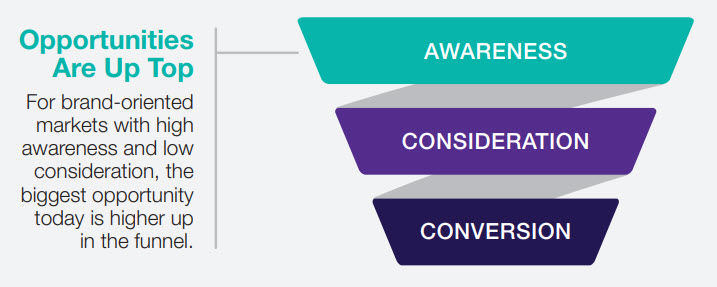
Is a medication a product? Is a treatment choice a purchase? Our non-life sciences colleagues at Escalent have been using our path-to-purchase approach to uncover the when, where, why and how of the consumer decision-making process for everything from credit cards and bank accounts to cars and coffee. But does this consumer product decision-making approach work for the life sciences industry? We think it does.
While many of us in the industry may think that life sciences requires a different approach for understanding treatment selection, we would like to show how to take this tried-and-true customer decision-making model to improve, what we like to call, the “path to prescription.”
Reframing our approach as “path to prescription” eliminates the bias in our minds regarding how patients and HCPs make treatment decisions, allowing us to focus on similarities around the way people think, feel and behave. It turns out, there is a lot for life sciences marketers to learn from path-to-purchase research.
Understanding the Path to Prescription Is the Path to Growth
It’s important to clarify that when we say “path to prescription,” we are not talking about the traditional treatment journey that describes what happens, but how and why it happens. The selection of a prescription or treatment comes down to the decision-making process of patients as well as healthcare professionals (HCPs). Patients behave like “consumers” when evaluating treatment options: conducting online research, seeking counsel from family and friends, and trying to make sure they end up with what’s best for them. And, as much as they protest, HCPs are equally as human as they are scientific. Physicians are required to make many life-altering decisions, in an instant, every day. Research has shown that HCPs are just as susceptible to mental shortcuts and biases as the rest of us because their brains have been trained to become efficient and quick decision-making machines.
As brand marketers construct their customers’ journeys, they tend to think of them as long, multistep processes. In reality, the time between need-recognition and purchase is usually over in the blink of an eye. In life sciences, we immerse ourselves in treatment journeys and tend to think of a treatment decision as a long, multistep process. But that process misses how decisions are often actually made—fast and reliant on mental shortcuts called heuristics. Our life sciences market research experience over many years and studies tells us that a significant number of prescription decisions have already been made before it’s time to choose a treatment. A trusted treatment that provides confidence and security to both the prescriber and patient becomes a default choice—in other words, a habit.
To understand how to disrupt the habitual healthcare decision-making process, we need to better consider Pre-selectors (those who come to a treatment decision with a choice already made) and Validators (those who have made up their mind pre-need but are looking at comparable offerings to validate their decision). Do we need to disrupt the current mental models that physicians have for treatment? Is our current messaging and detailing used to confirm the choice of another product? In what nuanced way do the norms of a specific physician/HCP specialty type and/or therapy area influence perceptions, decisions and behaviors?
To better inform the decision process for prescriptions, we need to turn our attention to higher up in the funnel.

Marketers most often focus on the bottom of the funnel—where conversion happens. Focusing too much at the bottom means you are mostly limited to what our non-life sciences colleagues refer to as “True Shoppers” (those who evaluate all their options once a need is identified). There are fewer True Shoppers than Pre-selectors and Validators. Increasing awareness and consideration—moving prescribers and patients to a place where they truly can be converted—is the path to growth.
Life sciences marketers are already good at creating treatment awareness among prescribers. To increase consideration, marketers also need to consider the influence of established habits and current mental models of treatment algorithms that underpin treatment selection. Awareness is valuable for creating patient agency. Not only name recognition, but a clear understanding among patients of how a treatment can impact their life can empower them to ask for, or at least discuss, a specific treatment with their doctor.
To better influence treatment decisions, life sciences companies must:
- map how and why treatment decisions are made
- leverage what we know from behavioral science and consumer motivations to better understand the decision-making process
Since 2016, we have been applying our path-to-purchase approach to help companies accurately assess their markets and upgrade their competitive positioning with prescriptive insights driven by behavioral science. While our Pre-selector, Validator and True Shopper framework is rooted in bigger-ticket items, it holds true for many categories including life sciences.
For more information, download Want to Win More? Your Guide to Boosting Customer Growth Using Our Award-Winning Path-to-Purchase Approach.










